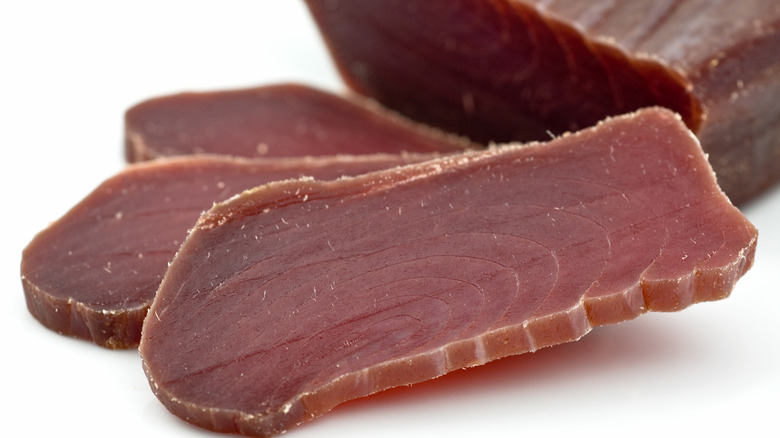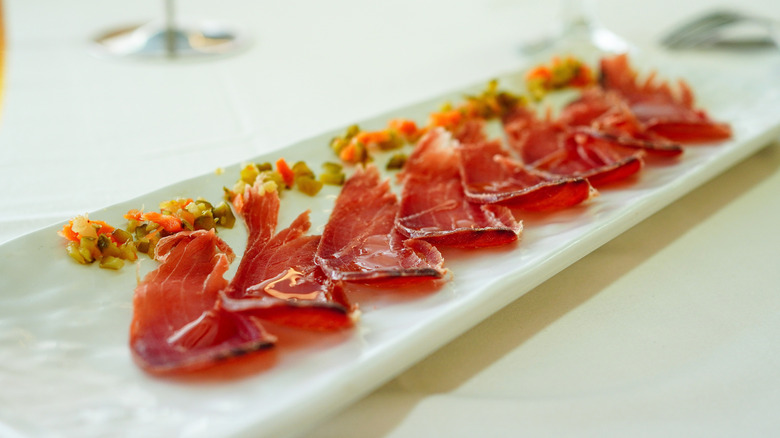How To Cure Tuna For The Ultimate Almost-Jerky Snack
Jerky is a moreish snack that can be found in many different flavors, from sweet to spicy. One simply doesn't just eat a single piece of jerky and call it a day. No, that whole bag will be gone before you know it. While store-bought jerky is expensive, you don't always have to buy it from the supermarket, and if you're a fan of tuna, you can make your own jerky-like treat right at home.
Cured fish isn't a new thing by any stretch of the imagination, with things like gravlax having been a Scandinavian delicacy since the Middle Ages. However, while salmon is most commonly used for cured fish, you shouldn't be sleeping on tuna — and not canned tuna, either. For cured tuna, you'll want to use tuna steaks that have been frozen, as this kills any harmful parasites. Farmed tuna is also a good way to avoid parasites, but you don't need to stress out too much about this, because there's little danger with proper freezing.
Once you have your frozen tuna fillet, it must be thawed before being covered in a mixture of salt, sugar, and spices. Some recipes for cured tuna use blackened spice blends, while others use pepper, dill, or a mixture of citrus zest. The spices will depend on personal preference. When the tuna is covered, refrigerate it for three days so the salt has time to absorb moisture. After that, you can enjoy your not-quite-jerky tuna snack! It will keep for about 10 days in the fridge.
Cured tuna is a delicacy in the Mediterranean
Although cured tuna is a relatively new kid on the block in America, if you head to the Mediterranean, you'll likely come across a staple called mojama. Made from salt-cured yellowfin tuna, this is the result of a tradition that dates back to the Phoenicians, one of the Mediterranean's most prolific trading peoples who lived between 1,500 and 600 B.C. Mojama can be found on many tapas menus in the south of Spain, and variations are enjoyed throughout coastal cities along the Mediterranean Sea, where seafood has been essential to survival for millennia.
Mojama is made from tuna filleted into strips, which are washed and left to cure in sea salt for up to two days. The salt is then washed off, and the fish is air-dried for 10 to 15 days, causing it to shrink and darken to a deep reddish-down. This process is similar to how Iberico ham is made, so mojama is often called the "ham of the sea."
Cured tuna can be enjoyed in many different ways. It can be eaten on its own with an olive oil drizzle to bring out the flavor, or it can be grated over another dish to add a punch of subtle fish flavor. Chefs in Valencia pair mojama with almonds, while others elsewhere in Spain prefer chopped tomatoes. It even goes well grated over eggs for a bit of extra protein in your breakfast!

